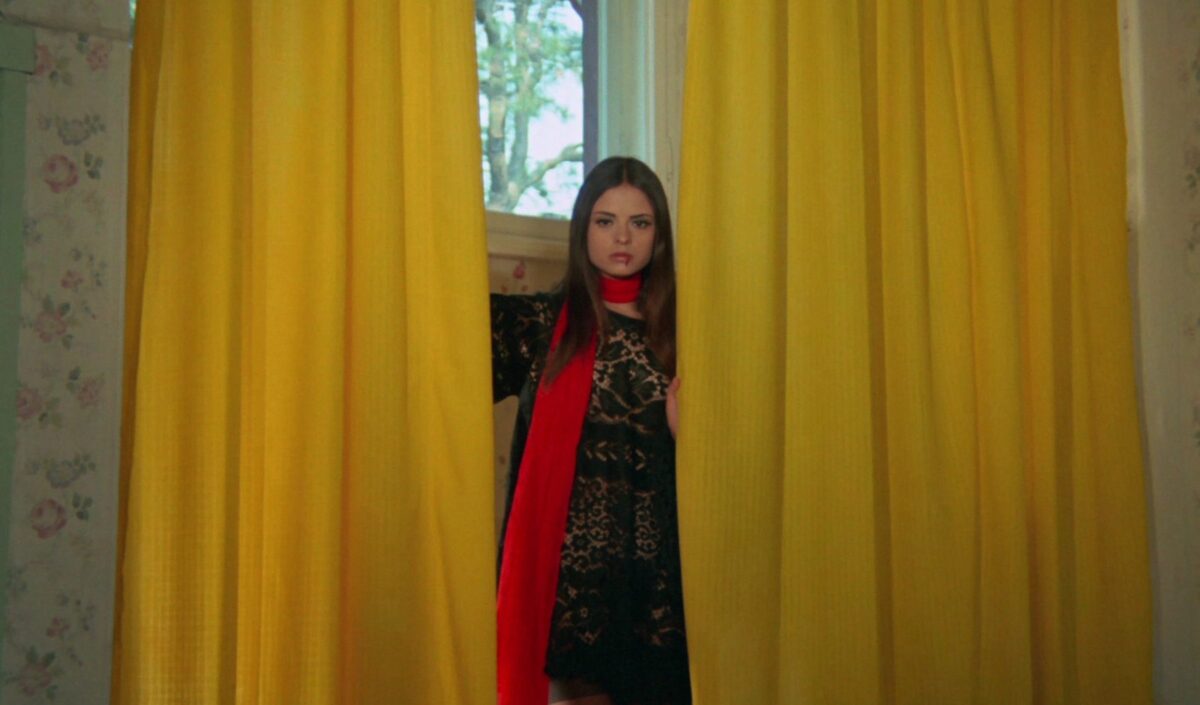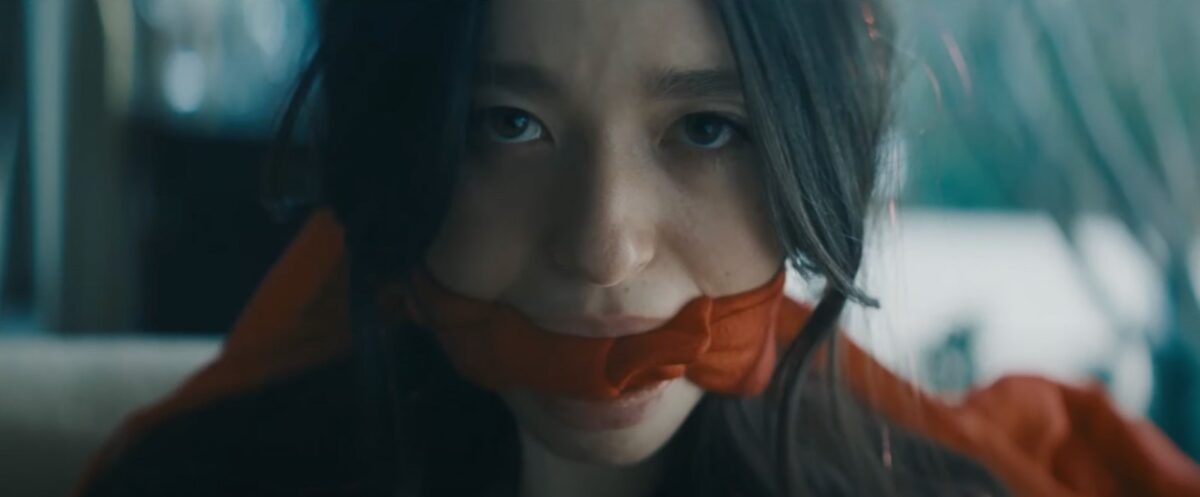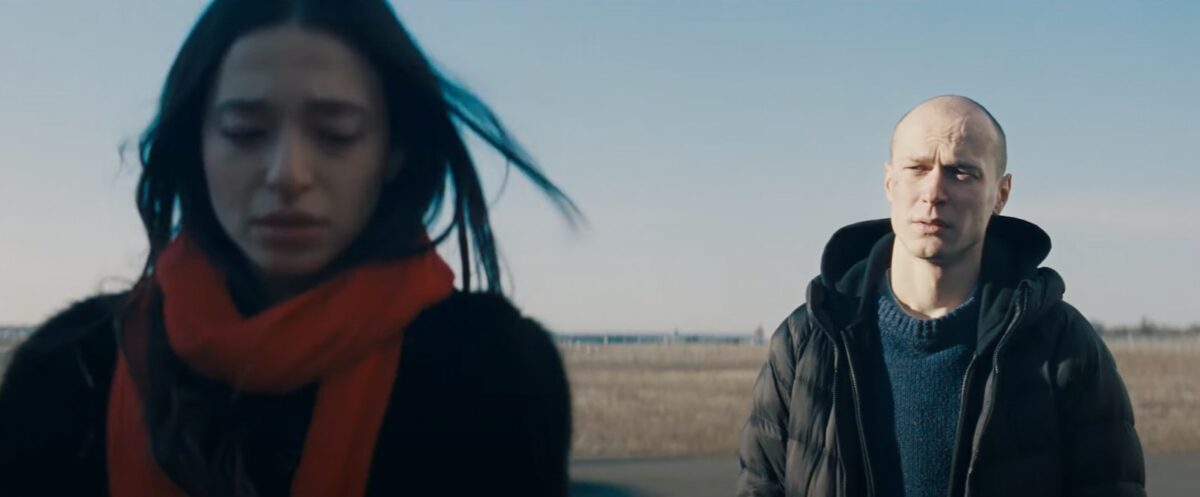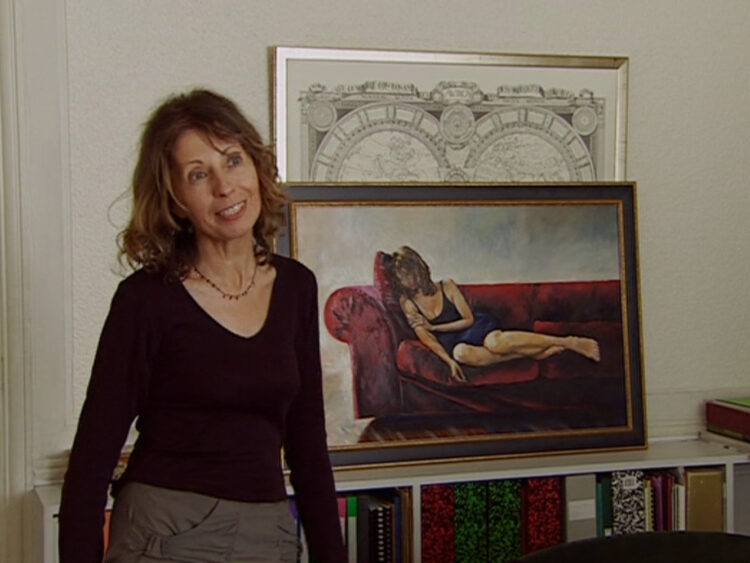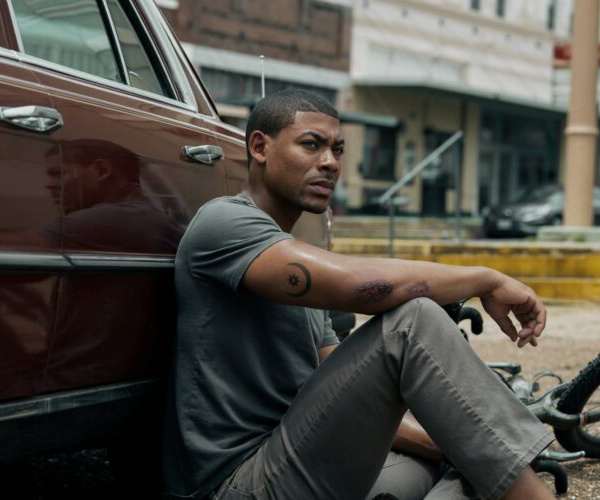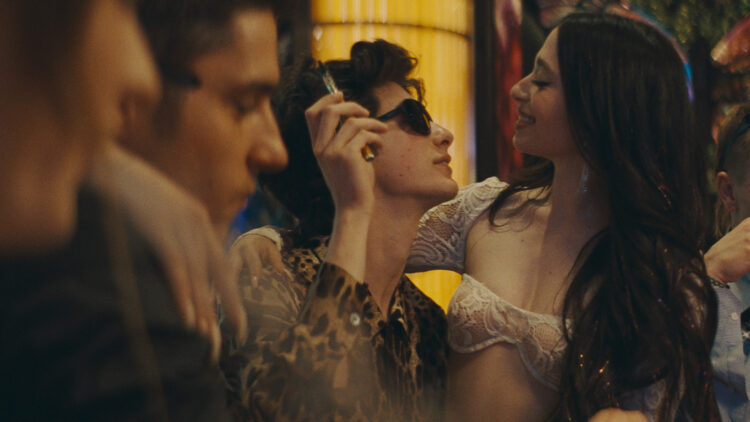

Sean Baker has been making films for nearly 25 years. With Anora, his Palme d’Or winner following the journey of a stripper from Brooklyn, he’s ascended further into popular culture. Baker isn’t a mainstream filmmaker, though, instead thriving in the independent scene with consistent critical hits. His last five films have been about sex workers, and he continues painting humanistic portraits with persistent empathy. His palette often involves hues of orange, pink, purple, and red, the skies in these places often much simpler than whatever is happening beneath them.
Mikey Madison is transcendent as Anora, framed by Baker as a rom-com hero and someone that shouldn’t be messed with. She’s brash, broken, happy only for a fleeting moment. The tinsel in her hair shines as she walks the boardwalk along the bottom of Brighton Beach. She’s immense in a role Baker infuses with comedy and drama to equal degrees. The film follows Anora as she meets Ivan, the son of a Russian billionaire, and they have a whirlwind romance that lasts throughout the first act. But they both crash down on the hard concrete of New York, and she spends the rest of Baker’s latest searching for answers, clarity, and resolution.
Anora finds Baker at the cross-section of slapstick comedy and class drama, the latter subject becoming clearer as the film plows forward. It’s simultaneously hilarious and melancholic––big audience laughs are followed by shortened breaths. Anora becomes rewatchable upon the end credits rolling. It’s a special film with a special lead performance.
Ahead of the film’s opening this Friday, I chatted with Baker, a noted cinephile, about his camera choices, his editing process, and Anora’s connection to The Taking of Pelham One Two Three.
The Film Stage: The first half of Anora is set up and shot like a romantic comedy before it flips on its head. Can you tell me about that choice and leaning into these rom-com elements?
Sean Baker: We were very aware of that, being the fact that this is her fairy tale, her “dream come true” in the beginning. So I did approach it knowing that I was going to employ the tropes of a romantic comedy, and essentially give the audience a romantic comedy for the first almost-hour of the movie. In a way, you could actually leave the theater after that. There’s that helicopter shot that pulls out showing the mansion where she’s living and she’s living happily ever after, and that’s the end. You even have a pop song that does a nice little book ending. Roll credits in that moment and over. But then, of course, I’m giving the audience a sobering reality for the next 90 minutes after that. So I had to apply all the tropes. It’s almost like an abridged, Cliff Notes version of a romantic comedy for the first hour.
I’m curious about the specific shot of her when they’re in Vegas. He’s just off-screen and the camera sticks to her. How’d you come to that decision?
I wanted it to be a one shot and come around this gorgeous circular bed allowing us to really take in Vegas in the background. There was just the actual imagery; it’s what led us to design the shot that way. But then, yes, once Ivan sits up out of the shot, it just becomes her. I think that’s very important. I mean, it’s this moment in which it’s about her decision. We learn, ultimately, that this means nothing to him, that it’s really not about him. He’s just finding a way of avoiding his parents and reality. It means nothing to him, but to her this is everything. So we have to be on her. We have to be studying her face, seeing her, hearing her reaction, seeing her process this information. That’s essentially why I decided to hold on her. I may get a lot of coverage on set, but my approach to editing is always slow as possible. To hold on these scenes, hold on these moments.
Why?
Because then you get the audience to actually live these moments with them. The minute you start cutting too much you become distracted, or you’re no longer focused and I’m forcing the audience to be focused on our protagonist there.
You talk about your role as an editor. I was reading your interview in The Creative Independent earlier and you mention that you take a roughly six-month break between shooting and editing. Why do you take that time?
First off, you need a break. You definitely need a break. I don’t see how anybody who is editing their own film can go the next day and just jump into it. Filmmaking is like a battle. You definitely need some healing time, right? But then there’s also the distancing. I think that’s so important because––especially with the types of films I make––sometimes [they] rest on or cover the subject matter in a docudrama way. I’m using docu-techniques throughout, even if it’s narrative fiction. I want it to feel as real as a documentary.
Why I do that is: I remove myself enough so that I can come back to it a few months later, and hopefully I’ve forgotten everything I’ve done. Hopefully I’ve forgotten my coverage and I’m now diving in as an objective documentarian who’s putting all this footage together and making it make sense. I don’t even reference the script. I’ll just have to remember the story I was trying to tell and then retell it with this material that I’ve been given that’s sitting on this hard drive. Then, at that point, I’m not doing an assembly cut because I don’t think that’s how a documentary editor would do it. They’re taking all this footage and trying to make sense of it. So I never will do an assembly cut. I’ll start from the beginning and go chronologically, one scene at a time, and I’ll complete each scene––including its sound design––before moving on to the next so that I really see the film fleshing out in its full form. I never know until literally the last day of editing whether we have a good film on our hands or not. That’s the stressful part, because you’re living for a year not knowing whether you’re made an acceptable movie.
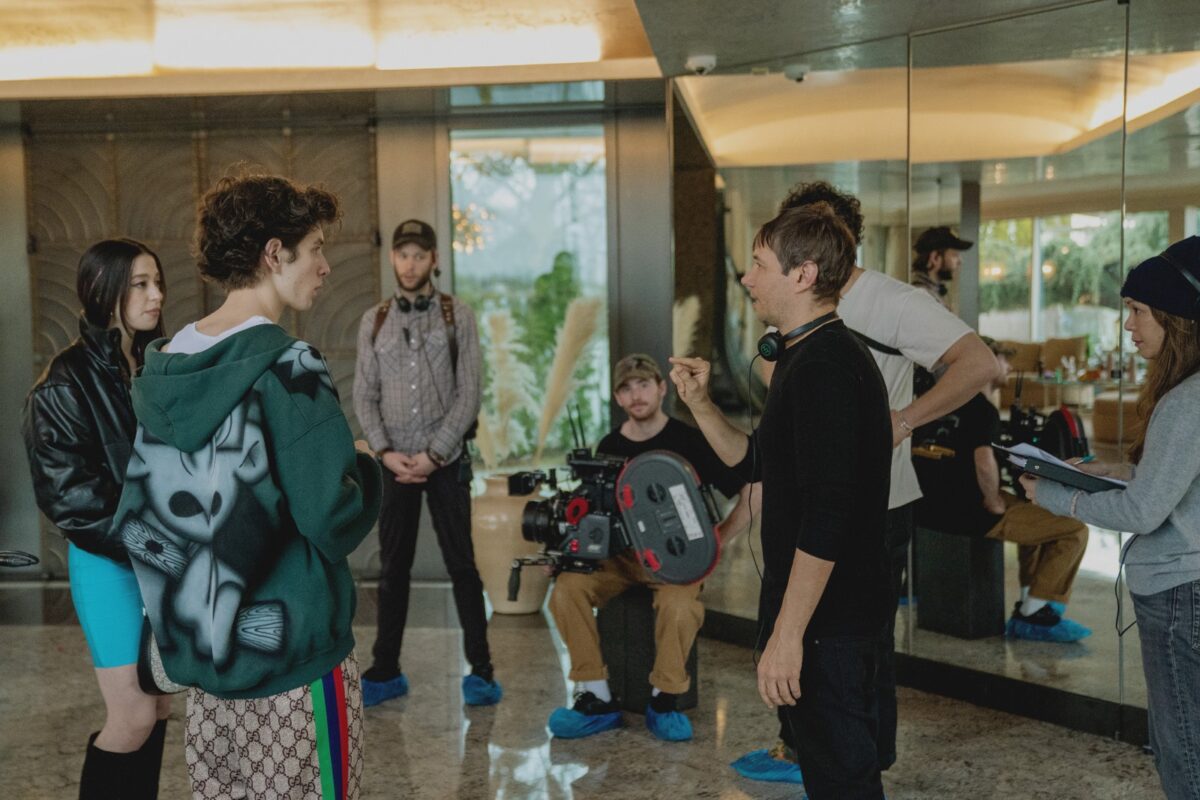
Behind the scenes of Anora.
Any time people talk about your movies, they seem to mention this idea of humanity. How do you capture these stories of people on the fringes? How do you do right by them?
I try not to allow it to become overbearing. If that was all I was thinking about, I wouldn’t probably get through a day of shooting. But you do have to be very conscious of the representation. I want to feel like I’ve done right by my subjects. Whatever community or subculture I might be focusing on, I want them to love the movie and I want them to feel properly represented. As I move forward, especially with my last five films about sex work, we’ve learned to involve as many people with lived experience as possible to consult to tell you whether we’re doing it right or not. That’s so important; that’s on our minds, most definitely. And ultimately I want those communities to see the film and like the film.
The color red is everywhere in Anora, especially in her clothes, from the scarf to the swimsuit and so on. How’d you decide on that color and those shades to represent the character?
I’m glad you saw that. My wonderful production designer, Stephen Phelps, I presented him with this color palette that I wanted to have in the film. Unlike my previous films, which were almost like multicolored rainbow palettes, for this one I knew I was shooting in the winter in New York. It was probably going to be mostly overcast, lots of grays, so I wanted this red to pop in almost every shot, whether it was a prop or whether it was clothing or hair.
There’s two reasons, and you can figure those two reasons out not to be too on-the-nose. But I thought leaning into it would allow audiences to think about it and try to decipher it. And what was so wonderful is that my crew just were all onboard. Jocelyn Pierce, who did costumes, and Justine Sierakowski, who did the hair. Oh, my God––one day she came in and said to me, “I think I got something that is now starting to be a thing in the dancer world. It’s called hair tinsel.” I’ve never seen that before in film and TV. I’ve never seen that. And suddenly she puts it in Mikey’s hair, and every single shot with Mikey now has hints of light purple, red, and pink. That’s a gift. Thank you, Justine. Thank you so much. They understood my vision, and they just enhanced it, and they added by just bringing so many wonderful ideas to the table.
I have to say: the red scarf was what began all of it. It was the seed of this idea, because I saw this red scarf used in Jesús Franco’s Vampyros Lesbos. The way that Soledad Miranda wore that red scarf, she resembles Mikey in many ways. Long hair, brunette, and that’s why I thank both of them in the end credits, actually. So this red scarf––knowing that it’s going to be such an important prop in the film, be a centerpiece prop––I think it dictated the look of the film.
Vampyros Lesbos / Anora
As the film progresses, there’s still tons of comedy, especially physical comedy. How do you balance the soberness of the situation with this slapstick comedy?
It was this balance that I was trying to capture through writing, through production, then through editing. What was great is that everybody was on the same page. So my actors understood that there was going to be this balance of different tones and they made it a part of their performance. They understood where we could go a little more broad and where they had to be more grounded––it was just because we shot mostly in consecutive order. We had to shoot our mansion out and we had to shoot our club out. But besides that, we were pretty much going in order. We understood the flow as we were shooting.
I had my editing cap on all the time, thinking about how this would edit. It’s important for me to inject humor in any story, even if it is a tragic story, or even if comedy itself might be inappropriate at the moment. As human beings, we find humor in sometimes-dark things. There’s dark humor; there’s gallows humor, right? There’s also the absurdity of situations. I find a lot of humor in just human interaction and behavior. You can probably see that through my films. When two people are arguing, I’m chuckling. Why? Because there’s two people probably being immature. I recognize immaturity in myself. I’m therefore connecting with this and laughing at myself. Does that make sense?
Yes, it does. The camera seems to continually zoom forward, pushing closer onto Mikey’s face. I wanted to ask about the specific shot of her screaming with the camera zooming into her mouth. How did you frame that?
I’m shooting films for the big screen, for theaters. I’m using it all. I’m going for extreme wide shots that probably would not be very much accepted in television-directing or series-directing. I’m thinking about the big screens first and foremost. So I’m going for the wides, but I’m also going for the close-ups; I’m going for extreme close-ups sometimes. It’s what fits the moment. We’re also using the widescreen format; this is scope. We shot on 35 for perf with vintage Lomo anamorphic lenses. That just lends itself to capturing amazing landscapes and, at the same time, capturing the human face in such a unique way. These lenses have what’s called a boca, the way that it bends the face. It’s very interesting; it draws you in. I think it’s how our eyes really see human faces.
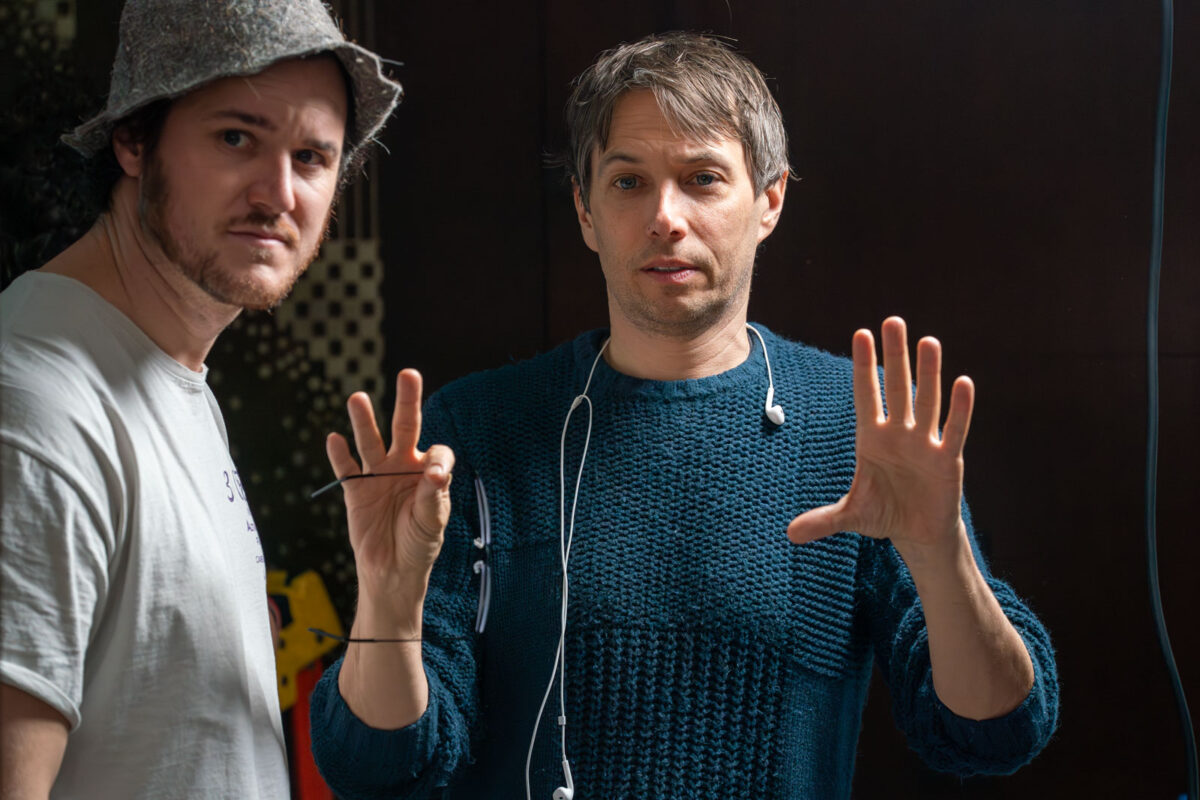
Sean Baker and Drew Daniels
Drew Daniels, my cinematographer, we’re always on the same page about how to use the widescreen format and how to frame things uniquely. Sometimes not centered, but all over the frame to draw your attention to different sets, different characters, and different details that I wanted to highlight.
It’s more of a feeling in the moment.
I think so. Especially for what you mentioned, for the scream. How could I not want to be in on that scream? That scream is about to jolt these men into like, “Oh, my God––what? What’s going on here?” That’s the moment where they get scared; she turns the tables on them, almost through her scream at that moment. This is her last line of defense. It’s a cinematic way of approaching this stuff.
I get what you’re saying…
I will add one more thing, if you want more on how we’re shooting this stuff. Drew and I really studied the work of Owen Roizman, the wonderful cinematographer who shot The French Connection. I really love to hear him talking about his work on The Taking of Pelham One Two Three, because they had to shoot these rectangular subway cars. It happens to be the same aspect ratio of 2.35. We were shooting New York at night. So we were shooting on film and we had to apply lots of the same techniques he used in 1974 to capture those images. Now, in 2023 when we were shooting, we were flashing the film, which is almost like a no-no. You’re literally exposing the film to one stop of light before actually shooting your film so you can get one more stop of exposure. We are pushing the film. There were lots of old-school techniques applied to this to really capture just a vintage, classic, cinematic look.
Anora opens on Friday, October 18.
The post “I Want It to Feel as Real as a Documentary”: Sean Baker on Anora, Editing Breaks, and Old-School Camera Tricks first appeared on The Film Stage.


